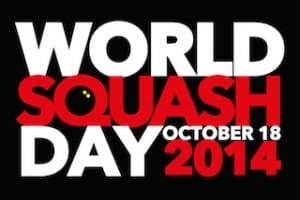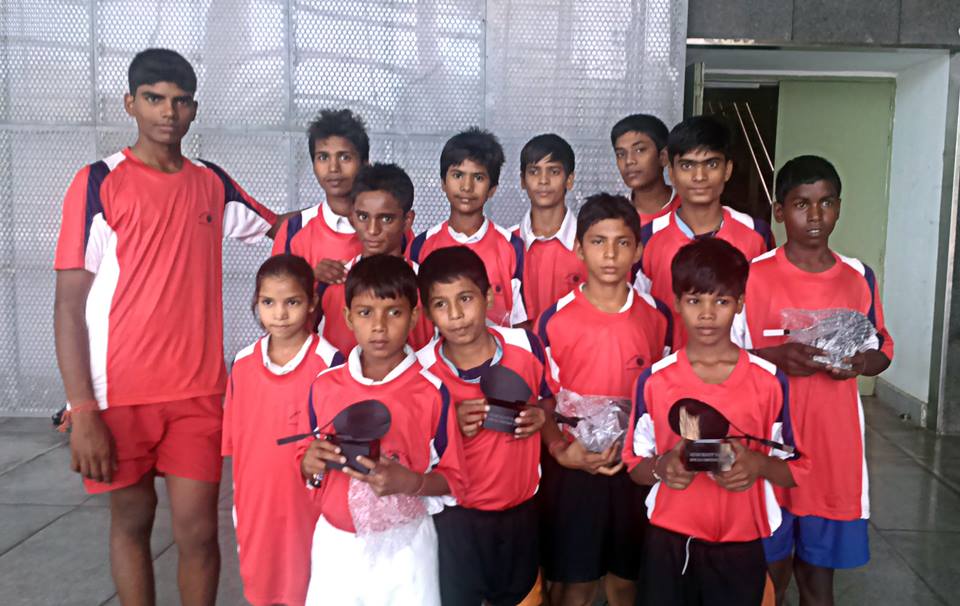How squash can grow the game and have a positive effect on your local community
World Squash Day is now cemented in the calendar as a major annual event where clubs and federations can use the occasion to grow the game.
I love it when individuals come up with creative ideas to capture the imagination, generate local media coverage, and, most importantly, attract new people to take up this great game of ours.
 This year saw some outstanding activities taking place across the planet, reported here on the WSD website. If your event was not covered, it’s probably because nobody bothered to post a report on the WSD Facebook page or email through the details.
This year saw some outstanding activities taking place across the planet, reported here on the WSD website. If your event was not covered, it’s probably because nobody bothered to post a report on the WSD Facebook page or email through the details.
I am always impressed by the stuff that goes on at the Willoughby Squash Club in Sydney. This year, Head Pro Aaron Frankcomb and his East Coast Academy held a fun open day, with all kinds of activities, from free face painting to fun games on court, to attract the next generation of junior players.
The day was such a success that they gained 60 new members. Just imagine how we could grow the game if EVERY club delivered projects with such energy and commitment.
In the UK, James Roberts and his Lichfield team-mate Mark Davey set off on a marathon challenge to play seven matches at seven local clubs in seven hours. As well as creating a huge buzz in all seven clubs they visited, they were also raising money for charity.
As for me, I chose to build on the phenomenal success of the Commonwealth Games in Glasgow by staging a Pro-Am doubles tournament. The wider doubles court set up at the Scotstoun venue in Glasgow finally delivered a softball version of the game that makes sense, instead of squeezing four competitors inside a singles court and wondering why matches often last a day and a half.
In the USA, much of Canada, and various outposts in Australia and Asia, doubles has a secure foothold. In North America, hardball doubles is played on a significantly bigger court, with, you’ve guessed it, a hard ball. In fact, the ball is so hard that if you get hit by it the bruises will change colour through the seasons.
 In Australasia, a hugely successful Jumbo Doubles Tour has been in place for years, with the emphasis on fun squash and a massive social programme with parties every night. I am not sure what ball they play with (perhaps someone could write in and comment) but one look at the Jumbo courts at the Tanglin Club on a recent visit to Singapore made me determined to get a Squash Mad team together one year to take part. Apparently, the players play front/back, rather than choosing a side wall each.
In Australasia, a hugely successful Jumbo Doubles Tour has been in place for years, with the emphasis on fun squash and a massive social programme with parties every night. I am not sure what ball they play with (perhaps someone could write in and comment) but one look at the Jumbo courts at the Tanglin Club on a recent visit to Singapore made me determined to get a Squash Mad team together one year to take part. Apparently, the players play front/back, rather than choosing a side wall each.
Here in the UK, we have a thriving doubles scene, but now we have the opportunity to make the game even more enjoyable by choosing the Commonwealth Games court dimensions as a standard measure and encourage clubs to add a doubles court to existing facilities.
Many friends in the States tell me that their doubles court is often the busiest of the lot with plenty of daytime use from senior members, couples and families, with the regular members coming in after work. There is, of course, an added financial dynamic in the increased secondary spend on food and beverages.
With twice as many players on court, your bar takings should also improve proportionately.
America and Canada support a professional Doubles Tour. With more courts, we could do the same over here.
The important thing for any development project is that ideas designed for the professionals also need to have an impact at grass-roots level. That’s why I set up a Trans-Atlantic Radar Gun Challenge linking the US Open with the Kent Doubles competition held at The Mote Squash Club in Maidstone, Kent.
Big hitters John White and Cam Pilley failed to get near Cam’s world record speed of 176mph on the glass court in Philadelphia, and their speeds were eclipsed by Team Winchester player Steve Wykes, who recorded 168mph at The Mote.
It was great to see all of the juniors having a go earlier in the day, with Mote junior captain Sam Coward recording a very impressive 139mph.
 Back in Philly, Sarah-Jane Perry (right) struck 144mph to set a benchmark for the women’s game. Here’s to some future challenges for the ladies.
Back in Philly, Sarah-Jane Perry (right) struck 144mph to set a benchmark for the women’s game. Here’s to some future challenges for the ladies.
Of all the events that took place on World Squash Day, one activity stood out above all others.
A junior programme, set up in New Delhi, provides free squash coaching for a group of underprivileged children, many of whom are homeless orphans.
I know that similar urban squash projects have been set up in various parts of the world, but few can have made the kind of impact on such an impoverished part of society.
Perhaps all clubs could take look at their surroundings and think about opening up some empty daytime courts to provide a similar scheme in conjunction with interested parties who understand the value of sport helping to provide a focus in life for underprivileged children.
There are many homeless teenagers in every town in the UK who could benefit from such a project.
Cost to the clubs? Almost zero.
Benefit to the community? Enormous.
Let’s make it a priority for World Squash Day 2015.
+++
Author James Jug was a very busy man on World Squash Day. Read his Blog post here.

